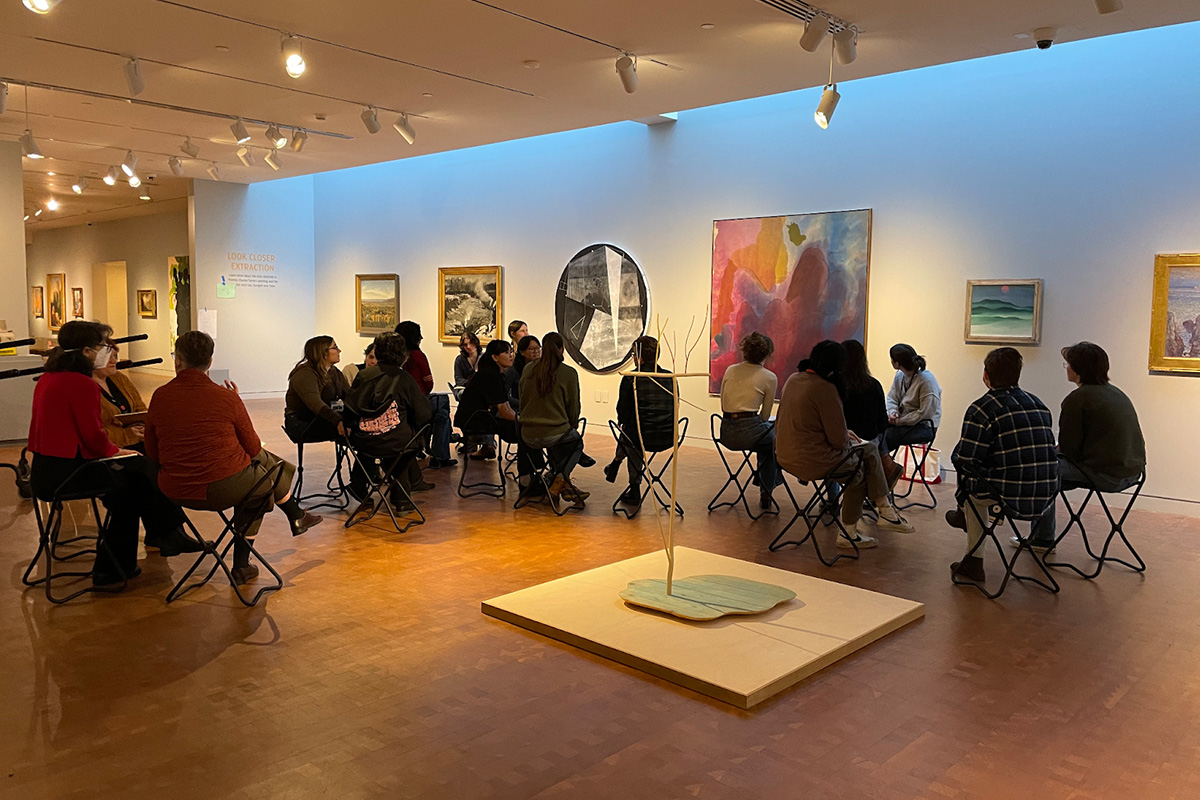
Human Flourishing in Art Museums
Josie Wong ‘26 is a sophomore Art History major and Museum Studies concentrator. Here, she shares her experience in the Smith College Museum of Art (SCMA)’s interterm course MUX222: Art Museums as Institutions of Human Flourishing.
Art Museums as Institutions of Human Flourishing explored the idea that art museums can foster well-being and a sense of belonging for humans to flourish. Inspired by the research of University of Pennsylvania psychologist Katherine Cotter and philosopher James Pawelski, Jessica Nicoll (SCMA’s director and chief curator),Charlene Shang Miller (SCMA’s educator for academic programs), and professor of Psychology Michele Wick established this two-week long course to explore the intersection of museum education and positive psychology. Over the course of the class, we had the opportunity to talk with the researchers, educators from various art museums, and visit the Clark Art Institute in Williamstown, MA.
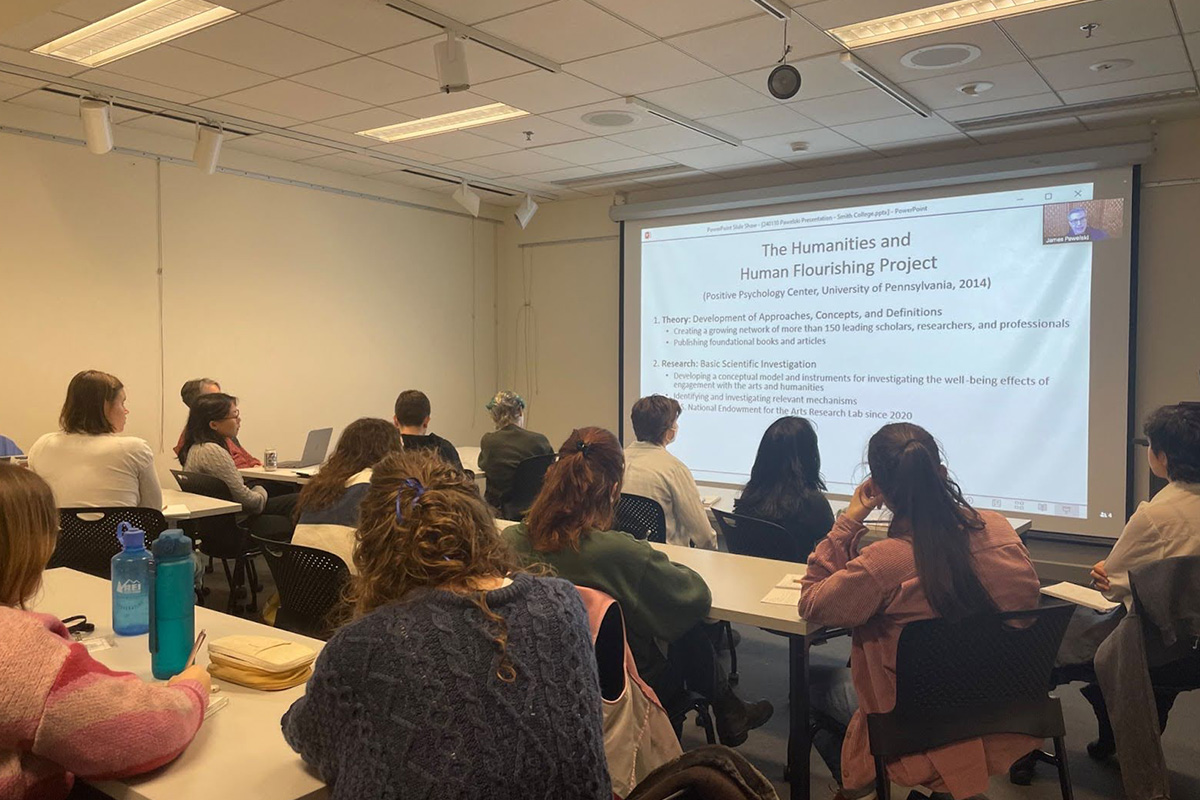
Students meeting virtually with James Pawelski and Katherine Cotter to discuss their research
What is flourishing? To flourish is to reduce factors of ill-being, improve conditions of well-being, and promote a deeper connection within oneself and the surrounding world. From our discussions and readings, we learned that when people engage with art and the humanities, specifically art museums, wellness is increased, such as reduced cortisol levels (decreased stress), feelings of restoration, and reduced anxiety levels. It was fascinating to learn that increased happiness, engagement, social connection and reflection are some of the many emotional responses that arise when engaging with artworks.
Museums are often viewed as elitist institutions that can intimidate people. The silence and formal atmosphere, the unfamiliarity with different works, the rules about not touching, and the overwhelming collections that are often unrepresentative of BIPOC communities are all factors that make museums seem exclusive and daunting. Discomfort in museums is also important to consider when thinking about the types of works on display and their reception and impact on different communities. Educator-led experiences, such as the activities we participated in, demonstrated ways to combat feelings of intimidation and discomfort, by promoting mindfulness through art engagement and establishing greater context and connection between the art and the viewer.
Class members participated in various experiences with art meant to promote this type of flourishing. Led by museum educators Charlene Shang Miller (SCMA), Gina Hall (SCMA), Ellen Alvord (Mount Holyoke Art Museum), Olivia Feal ‘17 (Mead Art Museum), Lilit Sadoyan (The J. Paul Getty Museum), and India Clark (founder, Wayfinder Institute), we immersed ourselves in different artworks and expanded our imagination and creativity. Some activities included creating soundscapes for a painting, creating poems, tracing an artwork, reenacting the compositions, and even meditation. I was really surprised at how interactive, fun, and limitless it was to engage with artwork, despite the physical barrier of ‘do not touch’.
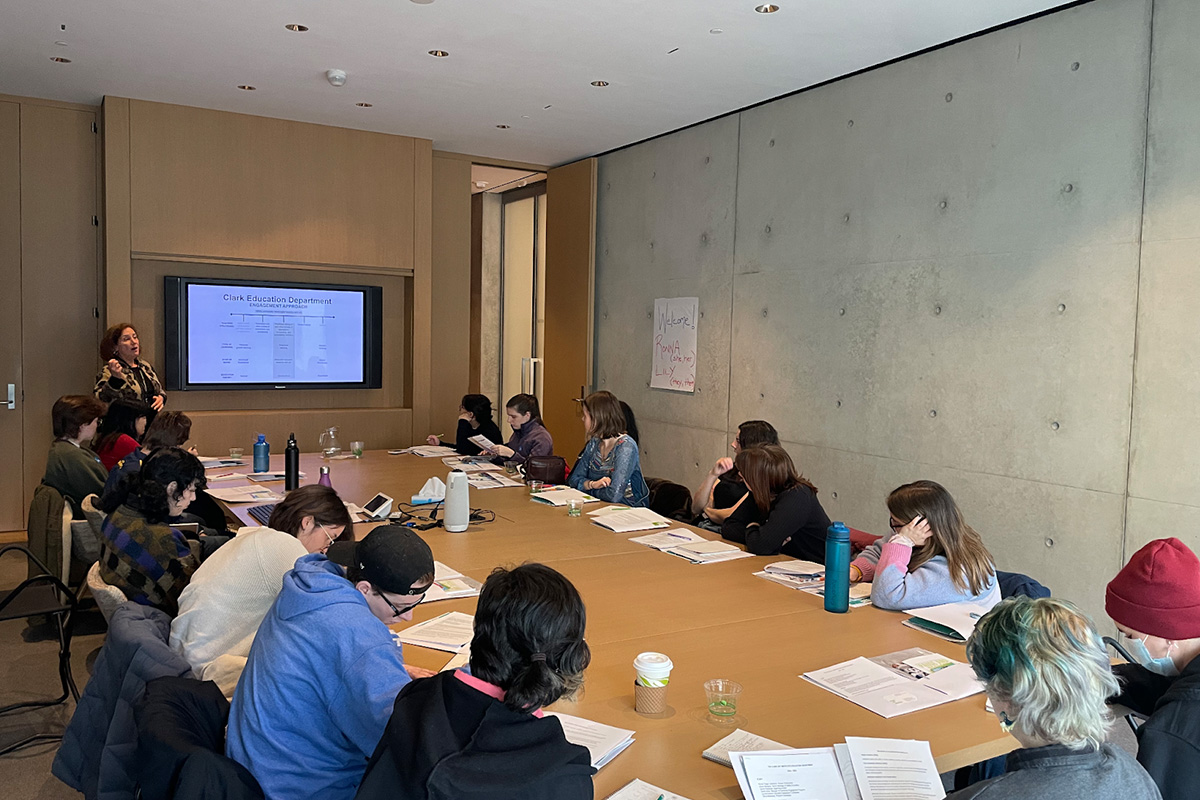
Ronna Ostheimer and students discussing education approaches at the Clark Art Institute
At the end of the first week, our class took a trip to the Clark Art Institute, where we met with Ronna Tulgan Ostheimer, head of education, and Smith alum Lily McGartland ‘20, education department coordinator. The Clark implements special initiatives including regular wellness activities, Meet Me at the Clark, a program for people living with dementia, and RAISE, an alternative sentence for youth within the Berkshire County court system that provides enrichment experiences with art to think about human experience and self-expression.
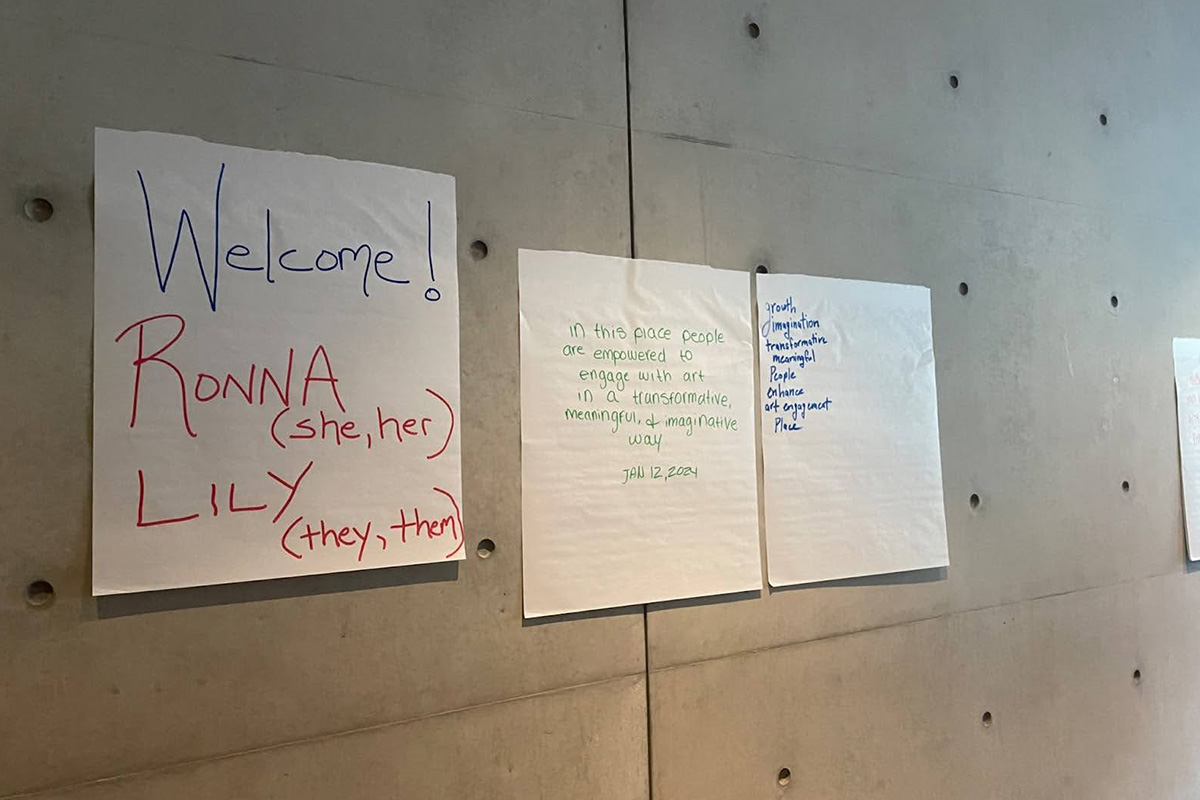
Students participated in an activity to rewrite Clark's 1950s mission statement in a more welcoming and inclusive way and encourage art engagement that is transformative and creative
We were able to explore the galleries and utilize the techniques that we learned to enrich our individual experiences while engaging with the art on view to establish a sense of wellness and belonging. Other visitors were seen stationed in front of artworks, spending a period of time observing or sketching the object, immersing themselves in the artist’s perspective and creating meaningful connections.
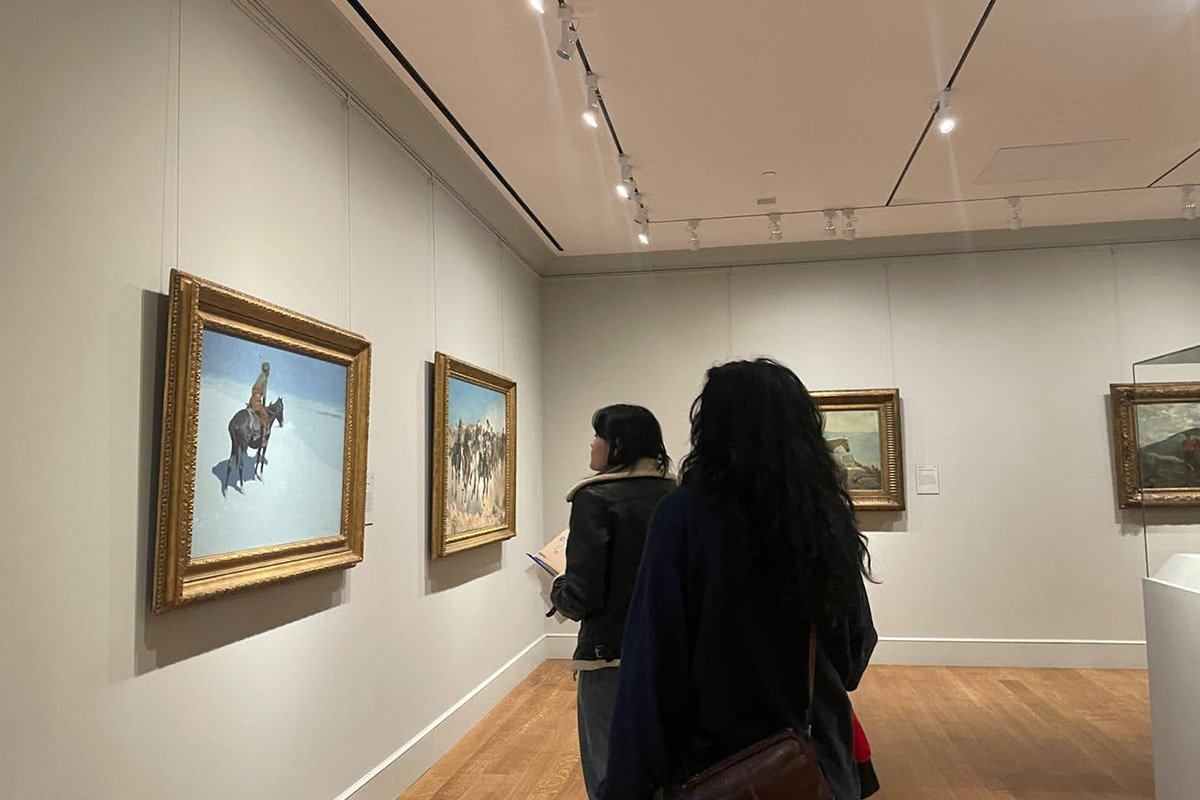
Students exploring the galleries at the Clark Art Institute
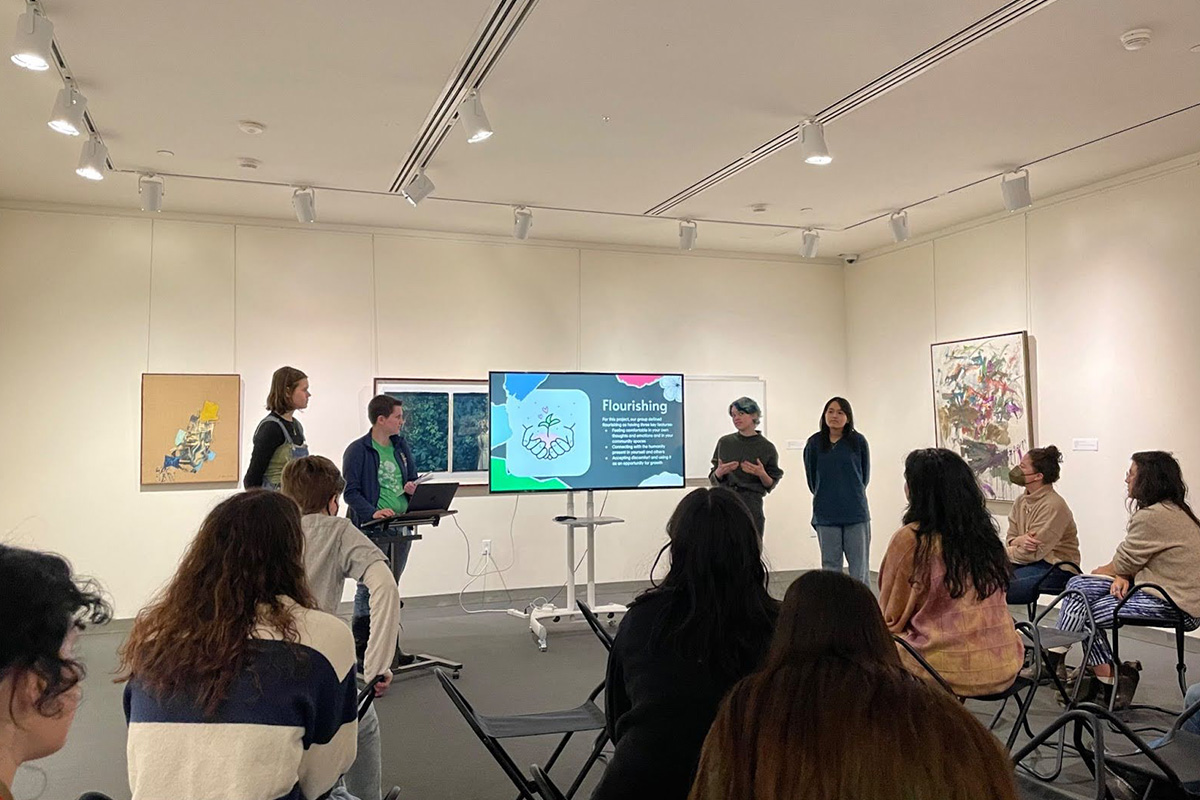
For our final project, our class groups presented our own concepts of flourishing programs for the SCMA itself
SCMA offers many educational programs, and community events that promote these factors of flourishing which center Smith students and the greater Northampton community, such as Smith museum courses, Art After-Hours, Second Fridays, SCMA Playdates, art talks, and even free admission to all! My hope is that more initiatives like these will be implemented in the future to bring together people from different backgrounds and disciplines and connect them through art, fostering a deeper sense of mindfulness and community.